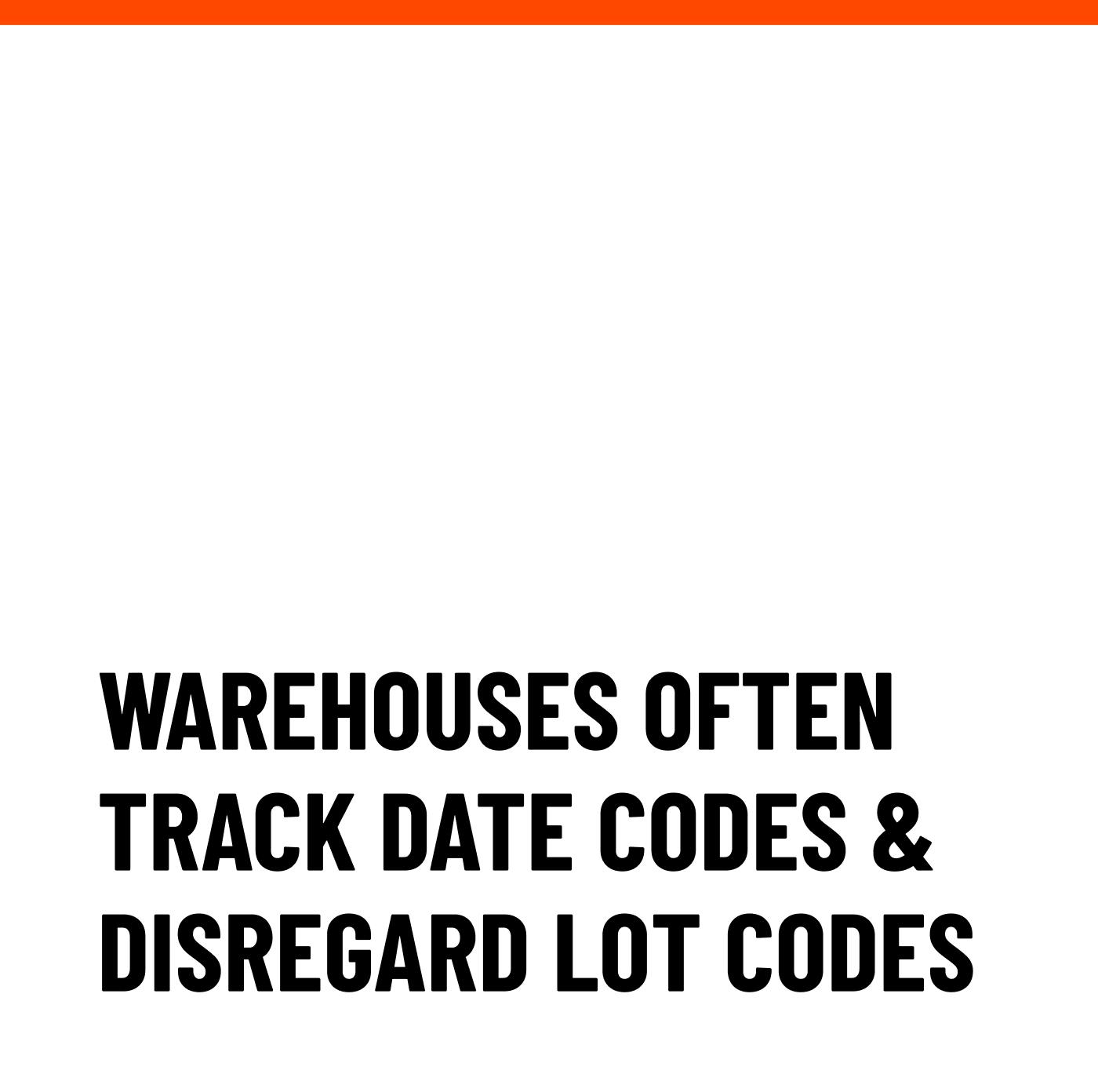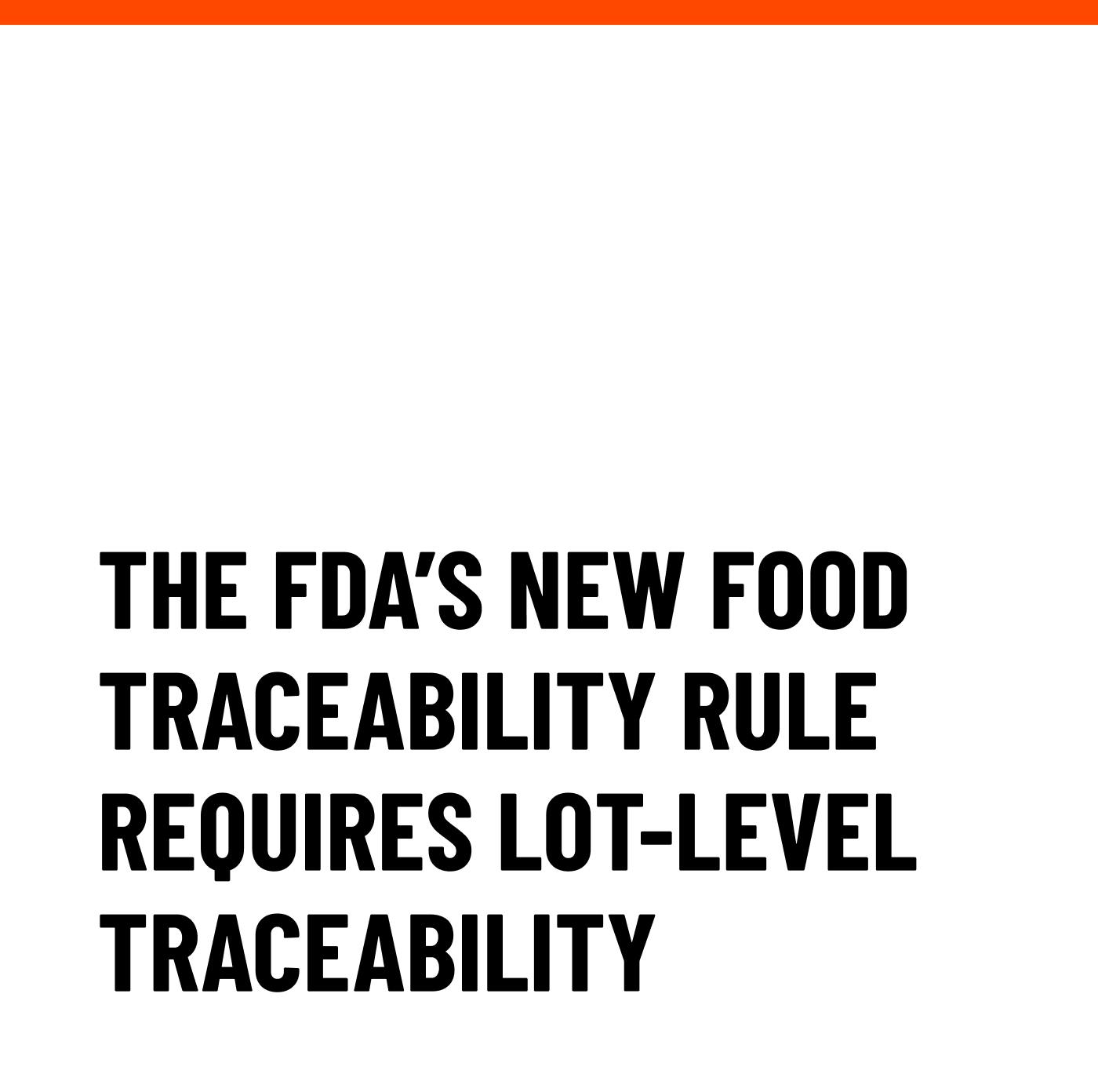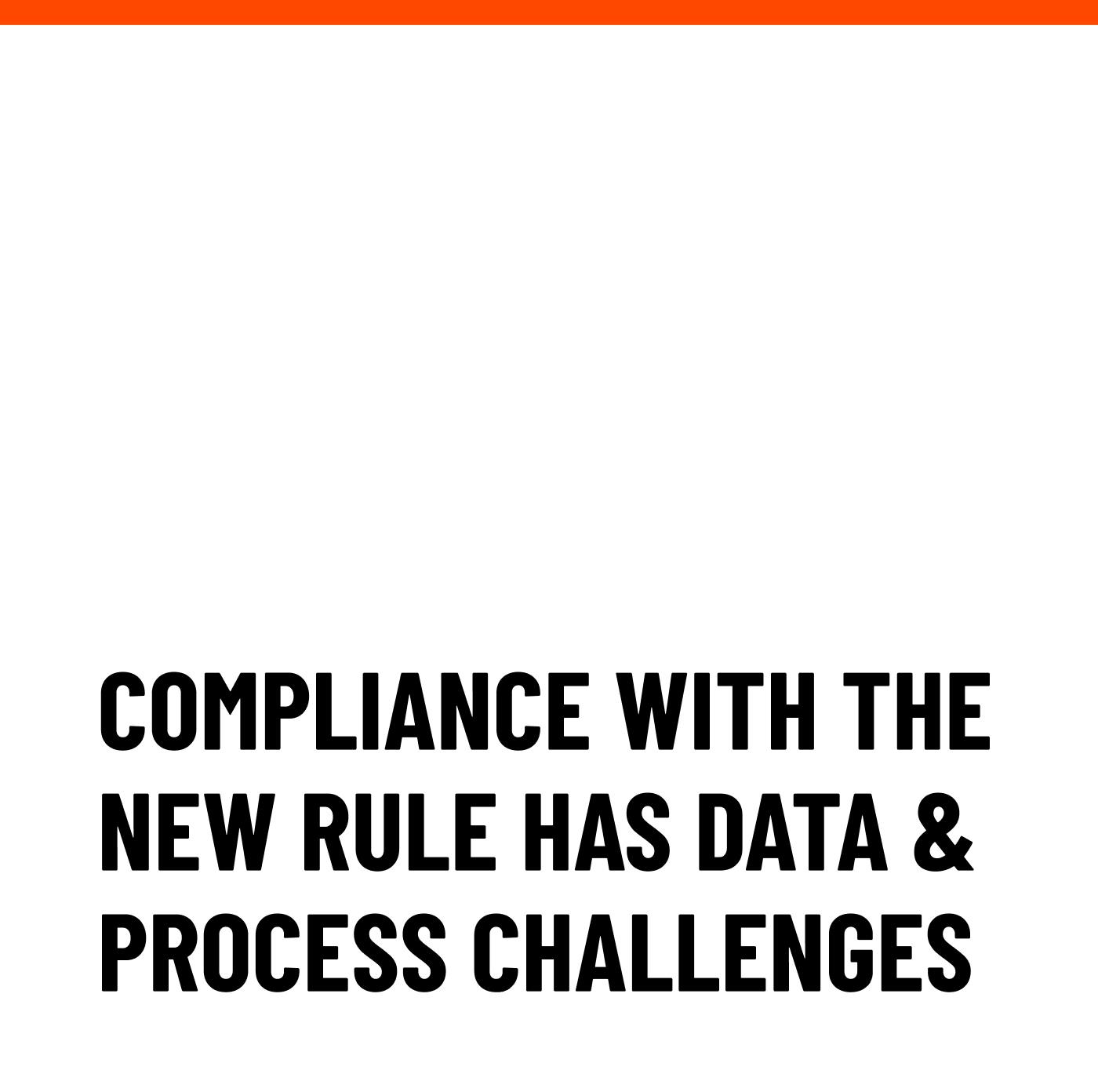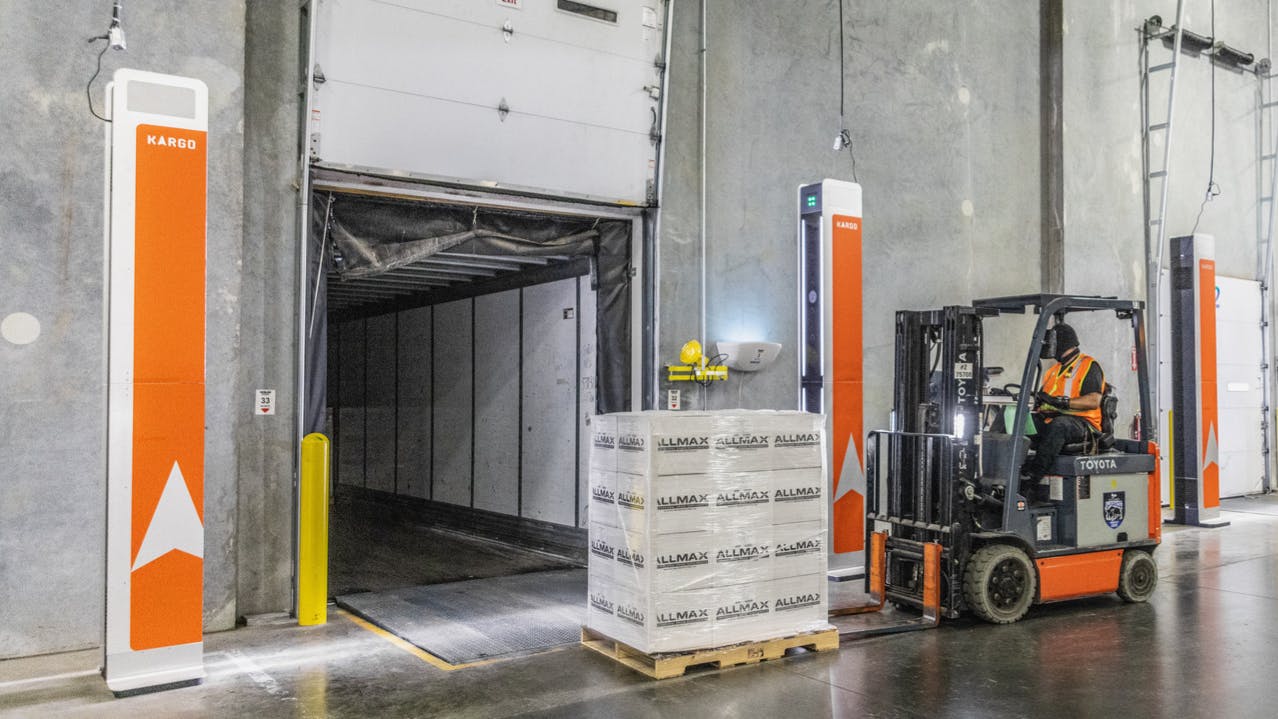Food & Beverage
How the FDA’s Food Traceability Rule is Uncovering Information Gaps in Food Supply Chains
| Kargo | 7 min
What You Need to Know



The food supply chain feeds 124 million households in the United States. Food passes from farms, boats and ranches to grocery stores and restaurants through a complex series of manufacturing, packaging, warehousing and distribution nodes.
Many different companies handle the food through the journey. The food supply chain has for a long time tried to standardize data communication between stakeholders, but has yet to create a system that is universally accepted. This leaves producers, manufacturers and distributors on their own to decide how to encode, print and communicate key data elements about their food products.
Upcoming regulations are about to shine a bright, uncomfortable light on the data communication gaps that persist in the food supply chain. This article discusses some of the current practices and impending challenges of what those gaps entail.
Definitions
There are many things you might want to know about an item of food throughout its journey. While each foodstuff may differ, the most common five data elements include:
Serial Shipping Container Codes (SSCC):
An 18-digit GS1 Identification Key used to identify a logistic unit, such as a pallet. It acts as a license plate to track the logistics unit during its transport and storage.
Stock Keeping Unit (SKU):
A unique code that identifies characteristics of the product such as manufacturer, brand, size, etc. It is essential for monitoring inventory levels and tracking movement through supply chains.
Lot code:
The code manufacturers assign to each batch, or products that were manufactured under the same conditions and in the same location. It’s a unique identifier that enables tracking through supply chains and is crucial for recalls.
Production Date:
The date when a food item was made or processed. Understanding the production date is key to managing the shelf life of products, scheduling distribution, and ensuring that consumers receive fresh, quality food.
Expiration Date:
A date that services as a guidepost for when a food product is no longer considered optimal for consumption. It is not a purchase or safety date.

Many of these data elements have synonyms; “expiration dates” may be expressed as “best by” dates, while “lot codes” can be referred to as “batches”. To add to the confusion, dates can take a variety of forms. “10/08/24” can mean October 8th to one party, and August 10th to another.
Oftentimes operations rely on manual processes and data entry to ingest these values, leading to errors. Such inaccuracies are more than mere inconveniences; they can result in significant financial losses, jeopardize food safety, and diminish customer trust.
Inventory Tracking in Today's Warehouses
When pallets of foodstuff arrive at warehouses, most food suppliers and their third party logistics providers (3PLs) only record the data that they need for inventory management.
The most common methods of inventory management in the food industry are FIFO (first in, first out) and FEFO (first expired, first out). FIFO dictates that products produced or received first should be shipped first, while FEFO prioritizes the shipment of products based on their expiration dates.
In both practices, the expiration date is the key piece of data because it determines where products are stored and the order in which they are shipped. This is why middle-mile warehouses can view the other data elements, including the manufacturer’s lot code, as extraneous and their collection an undue burden on manual receiving processes.
As a result, traceability of the manufacturer’s lot code ceases midway to the consumer. The smallest level of granularity becomes the expiration date.

Dismissing manufacturer lot codes as irrelevant overlooks their crucial function in ensuring food safety and traceability. These codes are vital in pinpointing specific batches of products throughout the supply chain, essential for effective recall processes and compliance with stringent industry regulations.
Without accurate lot code tracking, recalls can become significantly more challenging and extensive, potentially encompassing a broader range of products than necessary. For example, when a specific batch of chicken nuggets is contaminated and recalled, the 3PL may need to pull all of the chicken nuggets produced within a broader timeframe because they aren’t able to isolate only the affected batch. This expands the reach of the recall, contributing to food waste and exacerbating the financial impact.
With the implementation of a new rule aimed at enhancing food traceability, companies and their 3PLs will not be able to get away with only recording date codes and have to embrace a more comprehensive approach to data documentation.
The FDA's Food Traceability Rule
In 2011, Congress enacted the FDA Food Safety Modernization Act (FSMA) to improve the country’s food safety system by shifting the focus from responding to foodborne illnesses to preventing it. To implement FSMA, the FDA introduced new rules, including the Food Traceability Rule which goes into effect on January 20, 2026. The rule requires that specific key data elements (KDE) are meticulously recorded and maintained for critical tracking events (CTE) throughout the supply chain to enable more efficient and effective tracing of certain foods.

Of the KDEs, the traceability lot code (TLC) the most important because it links the other KDEs and allows the FDA to identify the source of the food faster. Once a TLC is assigned, it must stay with the food as it moves through the supply chain - and be captured at every CTE.
In other words, it will no longer be sufficient to only know the expiration-date of a pallet.
This poses serious liability for warehouses.
In the past, mis-receiving date codes may have caused mis-rotation of product and the breakdown of FIFO or FEFO. While painful, the primary cost manifest in expired or short shelf life product. Mis-receiving traceability lot codes would mean misreporting data to the FDA and unknowingly holding contaminated or recalled product in the warehouse.
Implications & Challenges
The FDA can impose civil penalties of up to $10,000 per day for each violation. In addition, the agency can seize and detain food that is not in compliance with the rule.
For food suppliers and their 3PLs, the transition to full compliance with the FDA’s Food Traceability Rule involves grappling with a host of operational and technological challenges.
Data Collection and Management:
The onus is on companies to elevate their data collection and management strategies to ensure KDEs are captured for every CTE. This is no small feat, necessitating a refined approach to how information is gathered and may involve overhauling current data collection processes and implementing new technologies.
Technology Integration:
Complying with the rule may require integrating new technology that not only capture and maintain a vast array of data but also ensure their accuracy and accessibility throughout the product's journey from farm to table. Operations teams will need to oversee the integration of these technologies with existing systems without disrupting current operations.
Supply Chain Coordination:
Food suppliers must coordinate with partners across their supply chains to ensure they are also complying with the rule. This includes ensuring that any upstream suppliers and downstream customers are capable of providing and receiving the necessary traceability information.
Data Accuracy and Accessibility:
Maintaining the accuracy, quality, and accessibility of the data is essential for compliance. Robust processes are vital for validating the accuracy of information and ensuring its availability, supporting efficient responses to regulatory inquiries or audits.
Conclusion
The Food Traceability Rule calls attention to the data gaps that have long existed within the food supply chain. Its implementation represents a critical juncture - not just a regulatory hurdle to clear, but a compelling call to action to address these gaps head-on, enhancing traceability across supply chains and improving the country’s food safety system as a whole. As the industry moves toward this new horizon, it's clear that the stakes are high, but so are the rewards for those who navigate this transition successfully.
Questions?
Connect With us
Ask us anything or drop your email to stay in touch





